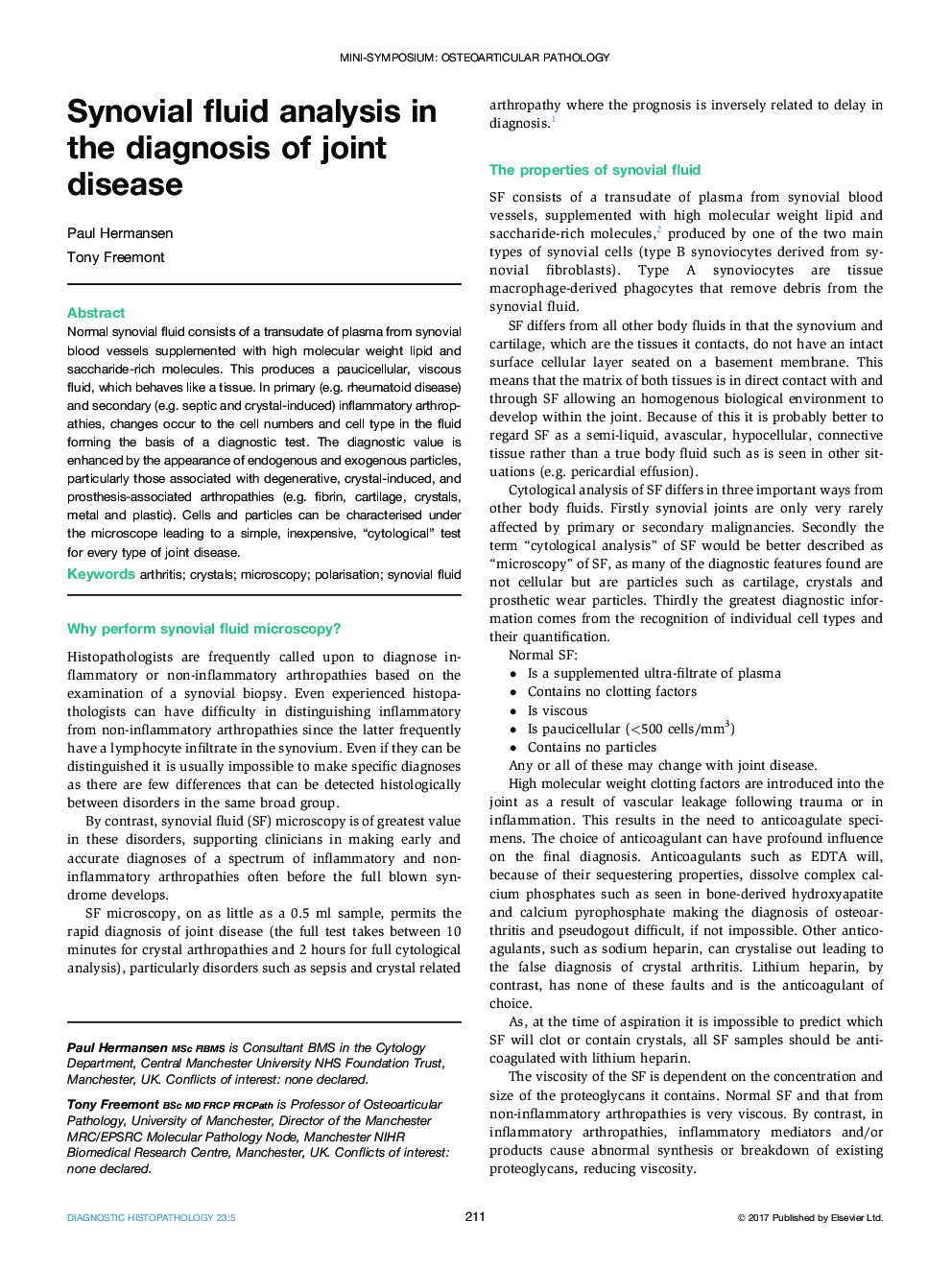| Article ID | Journal | Published Year | Pages | File Type |
|---|---|---|---|---|
| 5715993 | Diagnostic Histopathology | 2017 | 10 Pages |
Normal synovial fluid consists of a transudate of plasma from synovial blood vessels supplemented with high molecular weight lipid and saccharide-rich molecules. This produces a paucicellular, viscous fluid, which behaves like a tissue. In primary (e.g. rheumatoid disease) and secondary (e.g. septic and crystal-induced) inflammatory arthropathies, changes occur to the cell numbers and cell type in the fluid forming the basis of a diagnostic test. The diagnostic value is enhanced by the appearance of endogenous and exogenous particles, particularly those associated with degenerative, crystal-induced, and prosthesis-associated arthropathies (e.g. fibrin, cartilage, crystals, metal and plastic). Cells and particles can be characterised under the microscope leading to a simple, inexpensive, “cytological” test for every type of joint disease.
